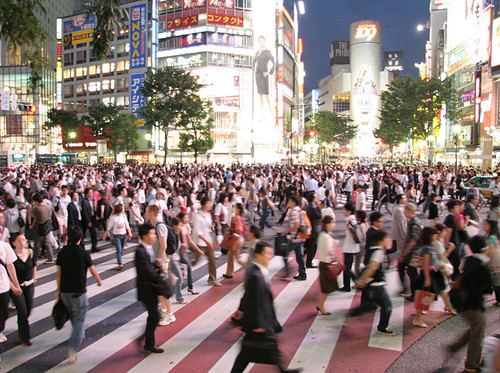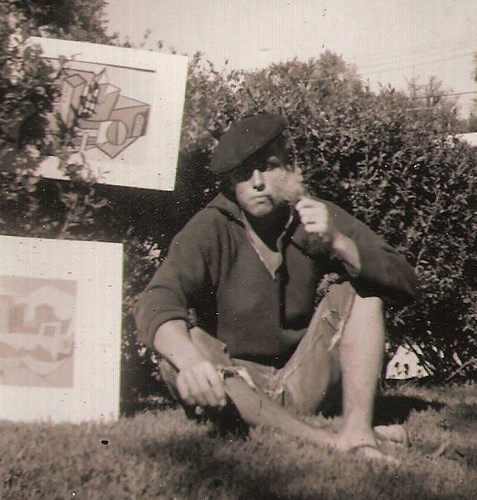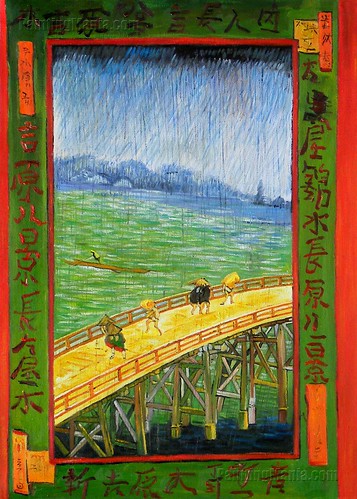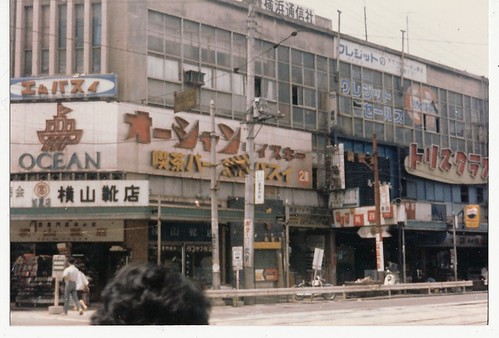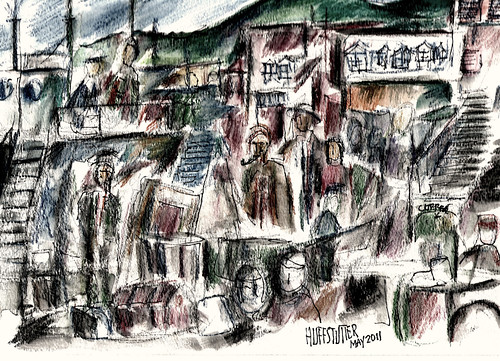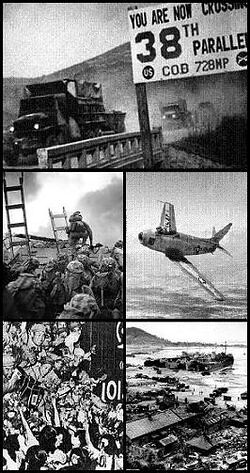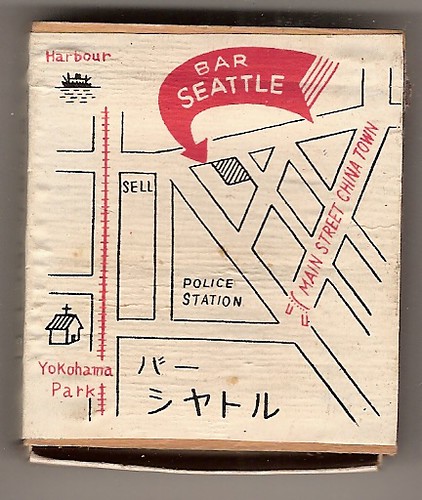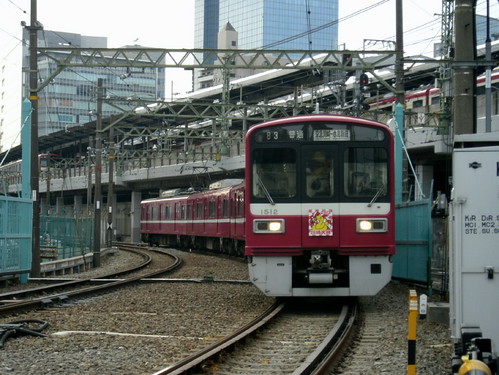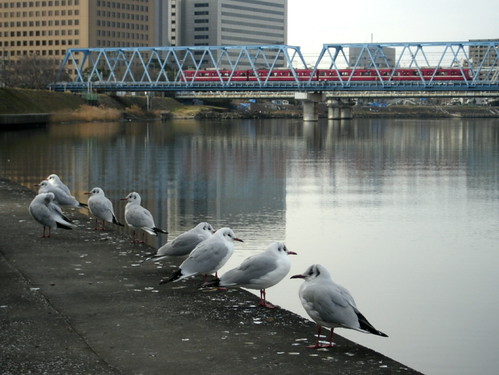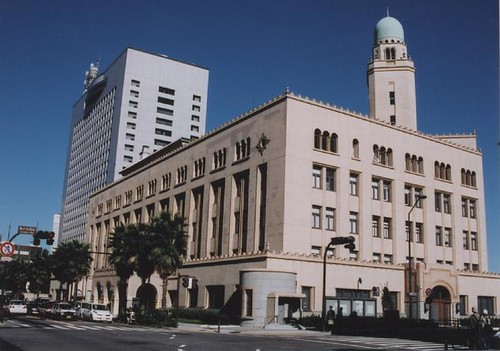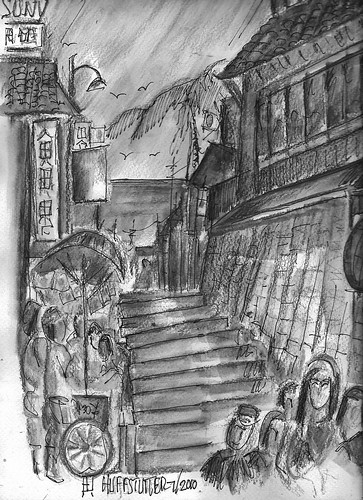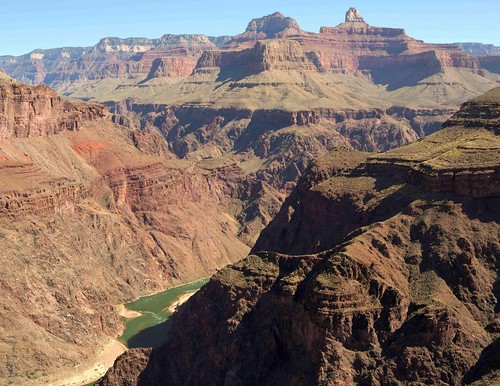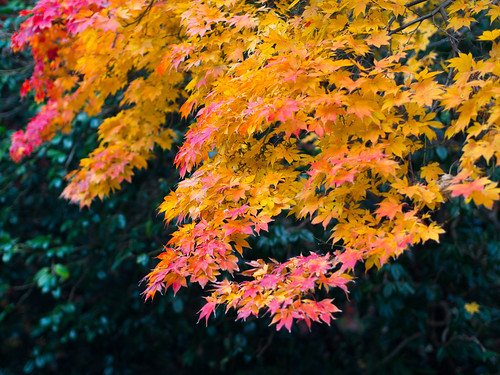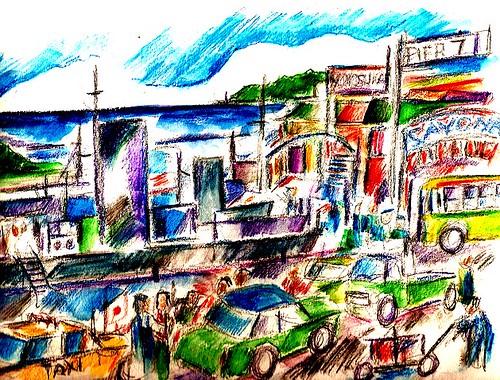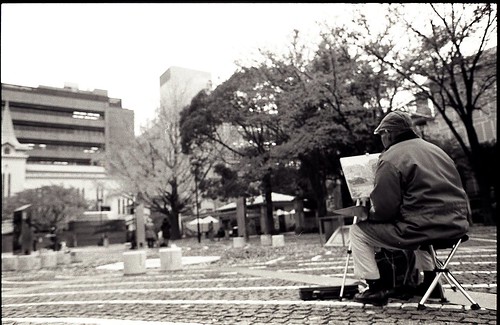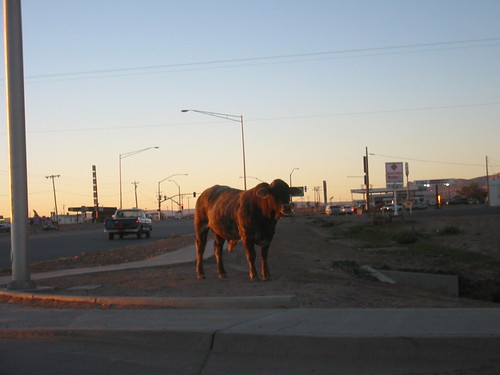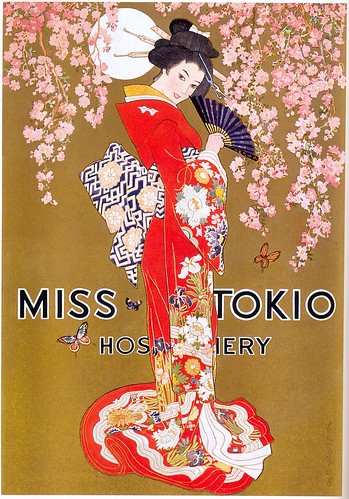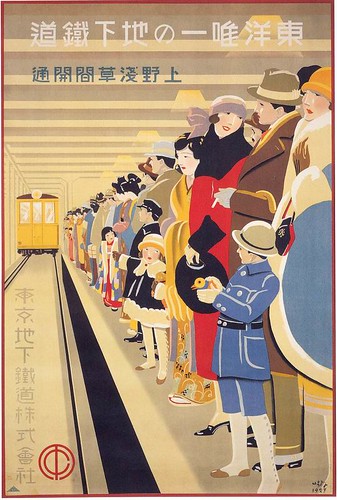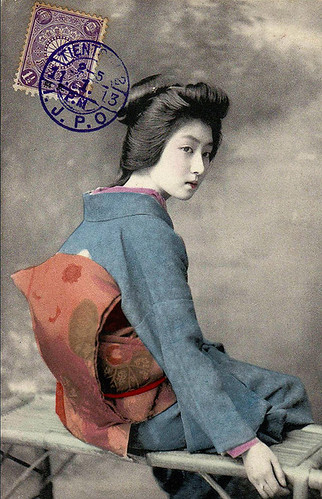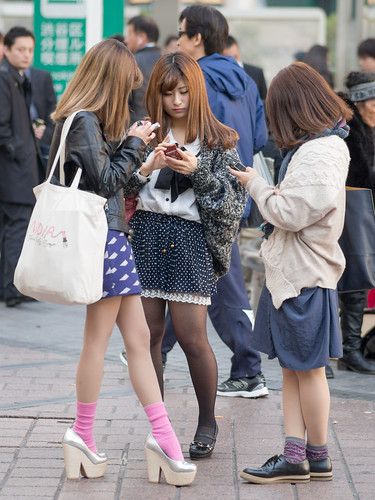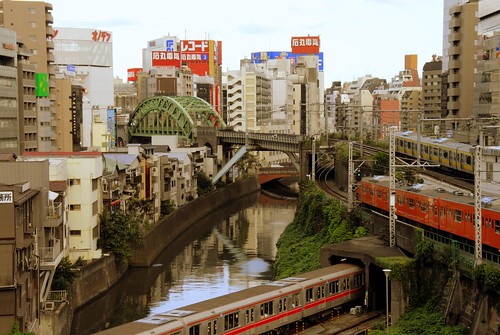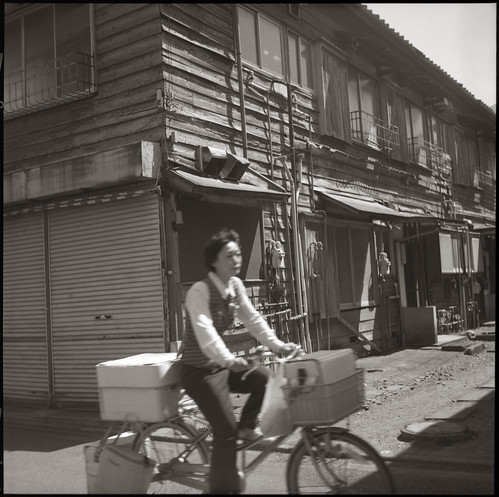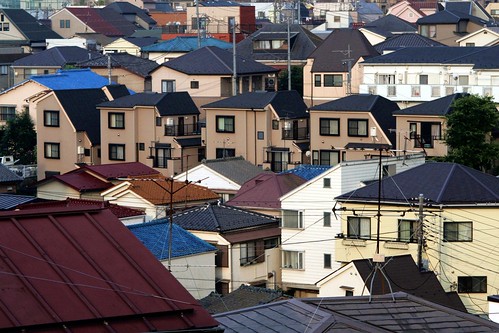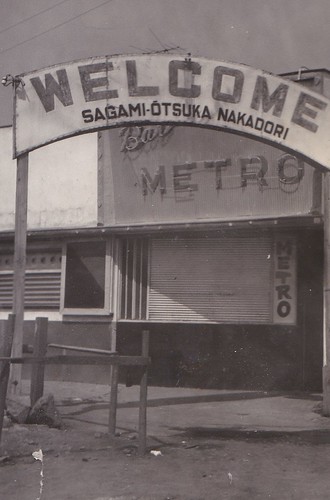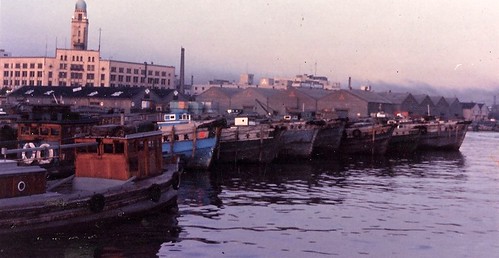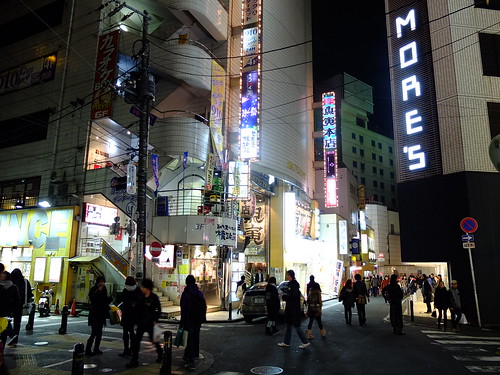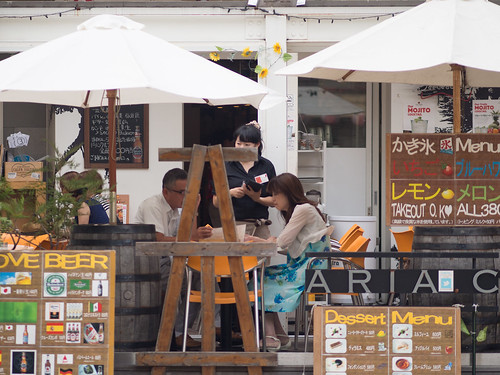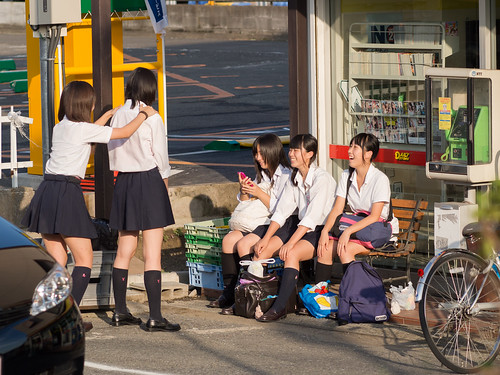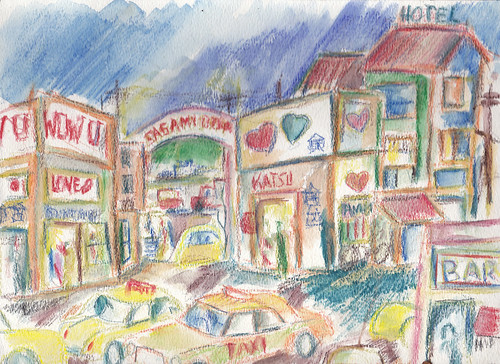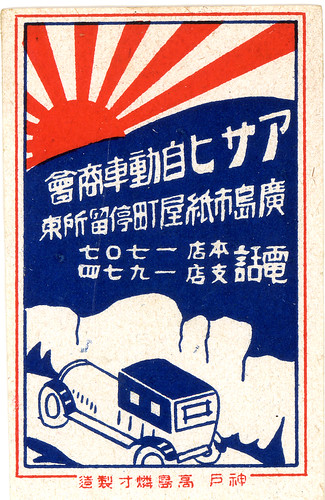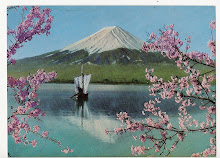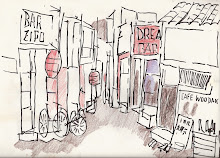You Contacts Groups Explore Upload
6
ads not by this site
Actions▾ Share via emailShare on BloggerShare on Blogger Share▾Newer Older
CONSIDERING JAPANESE CITIZENSHIP? THINK AGAIN!
HAVE YOU EVER THOUGHT ABOUT BECOMING A JAPANESE CITIZEN? Think again, it is not exactly like the US immigration policy, no not at all. Do I blame them for wanting to keep Japan a homogenous nation, preserving their traditions, religions and holidays?
Why in the world would the Japanese want to be forced into changing their entire history and lifestyle simply to please a few organizations that have nothing to do but bitch about political correctness, fairness, worship and gender preferences?
Thankfully, there is one nation on earth that has the sense to preserve their nation as they want. By Robert L. Huffstutter
YOKOHAMA PICTURE SHOW

Shot with my Petri in Yokohama 1962
RICE FIELD IN JAPAN 1962

I took this with my PETRI in Kanagawa Prefecture
Tuesday, May 14, 2013
CONSIDERING JAPANESE CITIZENSHIP? THINK AGAIN!
THE 60S GENERATION IS GROWING MORE MATURE...
HELLO TO ALL OF MY JAPANESE FRIENDS FROM THE 60S. If you would like to contact me, go to my FLICKR PHOTOSTREAM or my FACEBOOK. This photo was taken 2 years before I arrived in Japan, August 1961. I was stationed at NAS Atsugi, Japan from August 1961 until December 1963. I am hoping to return to Japan sometime in the future.
Monday, April 22, 2013
Tuesday, April 16, 2013
Yokohama Circa 1947
THESE PROCEEDINGS ARE OVER....four words that insured Japan's success, four words that are rarely mentioned.
General MacArthur was the only man who could have turned this tragedy into an event that led Japan to become a super economic power in the decades that followed World War II.
The Japanese, I believe, were totally stunned when General MacArthur, onboard the deck of the USS Missouri, after the signatures were affixed, stated, "...these proceedings are over."
The Japanese are a very forgiving people.
Sunday, April 14, 2013
Japonaiserie - Bridge in the Rain (after Hiroshige)
September-October 1887
Oil on canvas
73.0 x 54.0 cm
Van Gogh Museum, Netherlands.
Hiroshige (1797—1858) was one of the last great masters of the Ukiyo-e in Japan and earned his reputation with series of views featuring the well-known sights of Japan. Vincent copied Hiroshige's print Sudden Shower on the Great Bridge to study the visual effects of the Ukiyo-e aesthetic. He was particularly interested in the formal structure, based on horizontal bands of cool blues and greens, broken only by the foreground diagonal of the yellow bridge. Although Vincent matched his colors to those in the print, he applied his paint with light, short strokes, creating a more vibrant effect than the subtle tones characteristic of the Japanese printing technique. Vincent admired the masterful simplicity and directness of the Japanese art form, exclaiming "I envy the Japanese the extreme clearness which everything has in their work."
Monday, April 1, 2013
ALONG THE STRAND, SEVERAL DECADES AGO
ALONG THE STRAND, SEVERAL DECADES AGO
There was an intense air of despondency in the atmosphere of Venice Beach in the early 1960s. It was as if one saw two shadows behind wherever one walked. But this is the dark side of the area that had become a long strip of the Strand that nobody seemed to want. Exactly why Venice Beach became an area that lacked the upper-class charm it once had is a mystery to many and one that will never be known by those who passed on, too old to care but satisfied by the simple life the old apartments provided.
For those folks who spent most of their days looking seaward on the many benches along the Strand, they were happy to be alive and living in a free country where rent was cheap and the weather was ideal, gentle on their elderly and aged bones and flesh.
Many of those who had escaped the death camps of Eastern Europe and the Soviet Union made California their destination of choice. Because most of these refugees had very little income, the Venice area with its rambling, clapboard apartments up and down the alleys on and around the Strand became a haven for WWII expatriates and the displaced. Cheap rent, great weather and a variety of small markets, many that were Kosher, the Venice area was their answer to prayers.
City officials were anxious to raze the area and divide it into parcels that would attract developers, but such an act would displace thousands of the elderly. Consequently, much to the chagrin of the realtors with deep pockets, Venice Beach survived long enough to let most of the elderly live their last days where they wanted.
This was one part of the Venice I saw when I arrived in early 1960. But there was a brighter side, a more joyful side to the Venice of 1960s.
In many respects, it was the dark side of Venice that made it also bright for another and younger segment of the population. Venice Beach was attracting a steady stream of artists, writers, musicians, beach bums who would become lifelong surfers and young people seeking an new and different lifestyle in the California sunshine, a place where the markets stayed open all night,a place where there were cool people, cool stuff, cool love and romance, and then there were the beatniks and the espresso shops. Venice Beach was an open community with a place for everyone, a haven for freedom of expression, a place for artists to paint time and again, a place with people who were poets one would never forget.
Sunday, March 31, 2013
Thursday, March 14, 2013
Follow the crowd
Follow the crowd a video by Kojach on Flickr.
My love for umbrellas is akin to impressionist paintings. I really enjoy this photo; it could easily become a great painting.
Wednesday, February 27, 2013
Tuesday, February 26, 2013
Fishing Boats in Yokahama Harbor
Photographs by Cliff McCarthy.
Over 60 years have passed since these images were taken by Cliff McCarthy in and around Tokyo. At the time, McCarthy was an Air Force Sgt. As a way of passing time before his return to the United States, he borrowed a Speed Graphic camera from his 36th Photo Reconnaissance Squadron and explored his surroundings. In this collection you will find images of contrast and beauty within a society in transition.
“When you meet face-to-face, it’s an entirely different thing than the abstractness of war”, McCarthy said. “The humanity that we all possess emerges immediately. The act of photographing them was one of friendship.”
The photographs can be found as part of the permanent collection at Chubu University in Kasugai, Japan, Ohio University’s sister university.
Sunday, February 10, 2013
HISTORIC BUILDINGS OF JAPAN:JAPANESE ARMY HEADQUARTERS Ichigaya
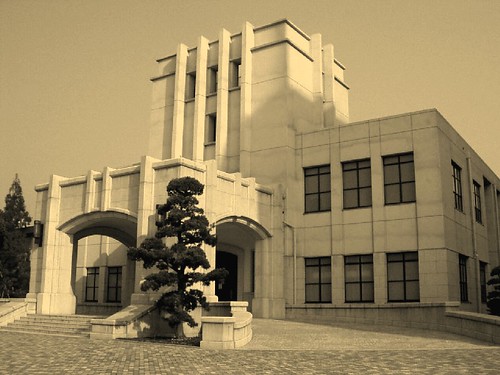
HISTORIC BUILDINGS OF JAPAN:JAPANESE ARMY HEADQUARTERS Ichigaya, a photo by roberthuffstutter on Flickr.
HISTORIC BUILDINGS OF JAPAN:JAPANESE ARMY HEADQUARTERS Ichigaya
NOT MY PHOTO. While browsing Wikipedia, this building popped up. It survived all of the destruction of war and is, I presume, still standing. What fascinated me was its style. It is a kind of Art Deco from what I can tell. Anyone know if it still stands. It is a beautiful style of architecture.
______________________________________________________________________ _____
The Army Ministry of Japan (陸軍省, Rikugunshō?), more popularly known as the Ministry of War of Japan, was cabinet-level ministry in the Empire of Japan charged with the administrative affairs of the Imperial Japanese Army (IJA). It existed from 1872 to 1945.
NOT MY PHOTO
REFERENCE FOR ARTICLE AND PHOTOGRAPH
en.wikipedia.org/wiki/Ministry_of_War_of_Japan
Sunday, February 3, 2013
HOT SPOT IN YOKOHAMA 1961 THE PEANUTS CLUB
According to the website below, there was a club called "Peanuts" at Isezakicho (伊勢崎町) in Yokohama on around 70's. discotimemachine.com/yokohama.html
Friday, February 1, 2013
STEAM SHIPS THAT MIGHT HAVE TAKEN VAN GOGH TO JAPAN
ABOUT THE STEAM SHIPS THAT MIGHT HAVE TAKEN VAN GOGH TO THE ORIENT...from Wikipedia for future editing
Since European settlement in the 1830s, shipping has provided a vital lifeline for Melbourne and for the wider Victorian economy. Geographically isolated from the world's major markets, and especially from those of Great Britain and Europe, which dominated the city's trade for over a century, Melbourne's development has been peculiarly dependent on overseas shipping.
Melbourne became a major overseas and coastal port following the discovery of Victorian goldfields in the early 1850s. During the late 19th and 20th centuries, the Port of Melbourne has handled general rather than bulk cargoes, and import rather than export cargoes. The adoption of containerisation has strengthened the port's competitive position; handling over a million containers a year, Melbourne is today Australia's leading container port.
From its inception in 1835, Melbourne depended on overseas and coastal shipping to provide the immigrants and imports essential for economic growth. During the years 1835-51 relatively small and slow vessels provided irregular voyages to and from the United Kingdom, the duration of emigrant voyages being gradually reduced from an average of 134 days in 1839 to 119 days by 1850. Before 1849 the British Navigation Acts determined which vessels could serve the Australian trade: passengers and cargo from British ports had to sail in vessels built in a shipyard in the British Empire, owned by a British citizen and manned by British crews. Similarly, Australian exports had to be shipped in British ships, and Australian coastal shipping was monopolised by the British. The number of vessels coming to Australia was linked above all to the level of immigration (convict and free), the Wakefield system of colonisation and the growing number of immigrants receiving assisted passages, encouraging ship-owners to enter the trade.
Coastal shipping services were primitive in the pre-gold rush era, being confined to rather irregular voyages between Melbourne and Sydney, as well as between Melbourne and Portland and pioneering voyages between Melbourne and Port Albert. News of the Victorian gold discoveries reached London late in 1851, creating an immediate demand for swift passages. No fewer than 86 000 people left the United Kingdom for Australia in 1852. Journey's end for most ships in the 1850s was Melbourne, which quickly became Australia's busiest port. The 2000-ton ships employed dwarfed those that had sailed to Melbourne before the gold rush. Ships of this size, being unable to sail up the Yarra River, had to lie at anchor in Hobsons Bay.
Abolition of the Navigation Acts in 1849 opened the trade to foreign-built vessels, and speedy, American-built clipper ships frequently visited Melbourne in the 1850s. Given favourable winds, clippers could make extraordinarily fast passages: the Marco Polo made the passage from Liverpool to Melbourne in 74 days in 1852, while the James Baines recorded 63 days in 1854, and the Thermopylae took only 60 days en route from Gravesend to Melbourne in 1868-69. The gold rushes increased the tempo of Australian coastal shipping, with four steamers and eleven sailing vessels being engaged on the Melbourne-Sydney run in mid1852, while the coastal trade of Victorian ports such as Portland and Port Albert also expanded.
While the large (3500-ton) steamship Great Britain was employed on the Australian run as early as 1852, steam took longer to replace sail in trade to and from Australia than it did in the transatlantic trade. The primitive steamships of the 1850s and 1860s were at a disadvantage in the long-haul Australian trade. Sailing ships were cheaper to construct and cheaper to operate than steamships, none of their cargo space being occupied by engine room or coal bunkers.
Substantial improvements in steamship technology in the period from the 1860s to the 1880s - including the adoption of the compound or dual-expansion engine, and the later introduction of the triple-expansion engine and geared steam turbine - enabled steamships to overcome a crippling disadvantage on the Australian route: the lack of coaling ports on the long voyage across the Indian Ocean. The opening of the Suez Canal in 1869 also favoured steam at the expense of sail. Steamships started to appear in the Melbourne-Europe trade in the late 1860s and became firmly established during the 1870s. However, the competitive advantages of improvements in steamship technology were partly negated by parallel improvements in sailing-ship design, especially the development of composite-built (iron frames and timber planking) and iron-hulled sailing ships. In the depressed conditions of the 1870s, iron-hulled sailing vessels proved highly competitive carriers of Australian wheat and wool exports.
However, by the late 1870s steam was rapidly replacing sail. Almost two-thirds of vessels entering Melbourne in 1880 were steam-powered, and steamships accounted for over 85% of the tonnage entering Melbourne in 1910. By 1914 a few remaining sailing vessels desperately searched for cargoes of wheat, coal and nitrates. The conventional steam-powered (from the 1920s increasingly marine diesel-powered) cargo liner dominated Melbourne's overseas shipping routes from 1900 until the advent of container ships in the late 1960s.
Mail contracts played an important role in the development of early steam passenger-shipping services to Australia. Following a period in which mail to and from the Australian colonies was carried by sailing ships, the British Admiralty awarded P&O the contract to operate a mail service every two months from Singapore to Sydney.
By the late 19th century the steam-driven passenger liner, offering reliable, speedy and comfortable travel, had replaced sail. In 1913 six shipping lines (Aberdeen, Blue Funnel, Orient, P&O, P&O Branch and White Star) offered steam passenger services to Melbourne, with P&O's 'M'-class liners (at 9000 tons) competing with the Orient Line's Orsova (12 000 tons) and Orontes (9000 tons) and the Blue Funnel Line's Aeneas, Ascanius and Anchises (10 000 tons).
from wikipedia
Wednesday, January 30, 2013
横浜 Yokohama 201209
Many memories associated with this landmark ship. I would love to live aboard this vessel and maintain a studio. This is just a dream, but one that is full of pleasure.
You have many excellent photographs I enjoy.
Monday, January 28, 2013
HOT SPOT IN YOKOHAMA 1961 THE PEANUTS CLUB
HOT SPOT IN YOKOHAMA 1961 THE PEANUTS CLUB
NOTE THE PEPSI SIGN. SOMEWHERE IN THIS AREA, THERE WAS A CLUB CALLED "THE PEANUTS" CLUB. NOTE THE VERIFICATION OF SUCH A CLUB IN THE LINK BELOW:
According to the website below, there is a club called "Peanuts" at Isezakicho (伊勢崎町) in Yokohama on around 70's. discotimemachine.com/yokohama.html
Thursday, January 24, 2013
NORTH KOREA THREATENS USA
General MacArthur wanted to neutralize the evil that lurked north of the 38th parallel. Unfortunately, President Truman called the 5-Star General home and relieved him of duty. Look at the difference between COMMUNISM and DEMOCRACY today--look at South Korea and look at North Korea. This is a lesson in freedom and democracy I hope is taught in our schools today. RLH
Imagine what would have happened in Korea if the United States had not stopped the spread of Communism. It should be apparent to all rational and intelligent people of all political persuasions and nationalities what Korea would be today if the United States had not entered the combat and stopped the crimes from spreading south of the 38th parallel. It should be evident what Korea would be today if the United States had left the future of Korea to fate. Take a look at North Korea and the evidence is clearly visible of what happens when selfish, power-hungry men and their compatriots want to rule with an iron hand of socialism. RLH
HISTORY OF KOREA WIKIPEDIA: en.wikipedia.org/wiki/Korean_War
Pacific Kilroy (6 hours ago)
Good point! I tried teaching the difference when I was in public education. I hope I succeeded with some; unfortunately, most are too stupid to find their butt with both hands, and their parents back them up. I also contrasted East and West Germany, Western and Eastern Europe, and Taiwan and China.
Do you want to know something scary/funny but true?
Most kids these days hear about our two political parties, Republican and Democrat, and they are so poorly informed that all they can do is associate the name "Democrat" with democracy. They have been taught that democracy is good and is our form of political system. They then want to support the Democrat party because they truly believe Democrats support democracy. The obvious (to them) reverse is true that Republicans, being against Democrats, must not support democracy which means they are the bad guys. I kid you not - as a public educator in social studies for 20 years!!
THEY CANNOT THINK FOR THEMSELVES, and many of their teachers are just as ignorant. I was always amazed, as a teacher, at how stupid some of my colleagues were!
I used to spend a LOT of time trying to de-program their minds and trying to teach them that FIRST: We are not a democracy but a Republic and that a TRUE democracy can hardly exist. I then make them learn about the Delian League of ancient Greece to see how democracy breaks down into chaos and socialism / Oligarchy. SECOND: The names of the political parties are just names and do not necessarily reflect the political opinions or views that some people might attribute to them.
I then introduced them to Aristotle's political cycle that was augmented (perfected) by Polybius and had them see how the only truly stable government that supported liberty was a conglomeration of forms (checks and balances) that was seen in the Roman Republic and which was reborn in our own Constitution. With a group of halfway bright 14-year-olds, I can have them comprehending this and being truly enthusiastic about our Constitution and personal liberties.
But alas - I am but one teacher who was driven out because he expected too much of his students and refused to compromise when Johnny wouldn't even TRY to read. I was tired of dumbing down our system so that the apathetic idiots could get an A and the smart kids could get perfect scores while asleep. High scores mean that the principals and superintendents get pay bonuses, so which side do you think THEY support?! IT'S ALL ABOUT THE NUMBERS AND THE MONEY! My expression was that "They are pulling an Enron." ...falsifying what was really happening in order to get more people to invest in what is NOT really working. The administrators are the corporate executives who walk away rich - the kids and society are the investors who lose everything.
Result: We have a majority - albeit small - that continue to vote for Obama and his Democrat friends who would erode our freedoms to become like North Korea. Students who were never taught that voting "Democrat" does not mean voting for democracy and their parents, who also know no better, who would sacrifice freedom for the false sense of security that the government will help them or do something for them.
Some, like our president, know exactly what they are doing to this country, but I am convinced that the vast majority, upon whose shoulders he rose to power, are simply too ignorant to understand that they are daily losing their freedoms and doing so at their own bequest.
roberthuffstutter (5 hours ago)
You are an excellent writer.One of the best works I have read explaining why the Democrats have taken the lead politically. Your words perfectly describe how the educators have robbed our youth of the truth.
Perhaps it is by a lack of qualified teachers, but I believe much of this anti-Republican mindset is designed by teachers who have an organized agenda promoting Socialism.
There was a time when the majority of the educators were either part of the "greatest generation" or their immediate offspring. Today, few teachers remember the hardships of WWII or the joys of growing up in the 50s and 60s, eras of very little government interference or impromteau rules and regulations.
Pacific Kilroy (2 hours ago | reply | delete)
Thanks for the accolades. From my own perspective, you are right. There are many teachers out there who are not qualified. But you are also right in your assumption that there is a general trend among educators who seem to promote Socialism. I will not venture to guess why that is the case at this time other than to speculate on a decay of values and education in the home and the lack of a life lesson or trial by fire.
My reason for that statement is this: I am a son of a WWII veteran and a Great Depression child. My parents constantly talked to me and taught me about our own, American, culture and filled me with the pride of being an American. We were poor. I remember being laughed at because I wore homemade shirts to school. I remember being a little excited when we actually had meat with dinner. When I went to college, I had professors that tried to fill me with their hateful attitudes that derided and ridiculed all that is good about America. Because of the foundation my parents had given me, I was able to hear the professors and approach their philosophies with an open mind, therefore, admitting that not everything about this country is perfect and pure. However, I was also well trained enough and knowledgeable enough and had enough common sense to see a bigger picture than the one they were forcing upon the class. I was able to listen respectfully, respond in a way that did not displease the instructor, yet maintain my own beliefs.
Too many young people these days have no beliefs at all. They are not properly parented, in part, because both parents are trying to earn enough money to buy all that happiness that they have been lied to about by the "undercurrent" of our society. So they are complete voids and tend to believe whatever relatively intelligent sounding individual happens to get to them first.
Many teachers in public and private settings are essentially intellectual snobs who have never really DONE anything. Their minds are full of theorems and formulas, but they have no real social experiences with which to "fill in" the blanks. Our teachers of the past were, as you say, part of the Greatest Generation who had real struggles to conquer and whose perseverance caused them to grow in WISDOM as well as knowledge.
Today, we have developed into an instant gratification society where everyone wants to have everything...without a struggle.
The other problem (that really gets my blood boiling) is that we, as a society, no longer value social studies. From the time I was in THIRD GRADE, I can remember people talking about how far behind American kids were compared to other industrialized countries. The reaction: every few years there is a huge push among educators to promote math and science. I have no problem with that, since I have ACTUALLY SEEN students get out a calculator to subtract 2 from 2 (not a joke!). But what I DO have a problem with is the fact that we constantly sacrifice knowledge in social studies for our efforts to improve our industrialized society. In my state, social studies is usually taught by a coach who cares more about his off-season weight lifting program than what his students are or are not learning. But that is sufficient because state standards are so low that kids who can barely write their names SOMEHOW manage to pass a standardized test. The result is that these kids go on to college - where they decide to be coaches but realize they also have to teach something...so they pick the subject they remember as being the easiest - social studies - and become a coach and teacher who perpetuates the problem. Without a firm foundation and knowledge of who we are as a people, how can we possibly develop into an even better society?
Kids these days don't know about the Bataan Death March, for example. I once conducted my own survey of sorts and found that less than 10% of my high school's students ever heard of it, and most associated it with Hitler and the Nazis. I once picked up a history book and turned to the unit on World War II. It had the entire Pacific Theater of the war condensed to one page, BUT it had an entire CHAPTER on Jesse Owens at the Berlin Olympics...as part of World War II!!!
It is frustrating to see that we have already slipped so far that people are ignorant enough of their own culture and freedoms to literally cheer as those liberties are vanquished.
roberthuffstutter (a moment ago)
Your last sentence says it ALL--in my opinion.
"It is frustrating to see that we have already slipped so far that people are ignorant enough of their own culture and freedoms to literally cheer as those liberties are vanquished."
A SHORT STORY: "LET'S GO TO CHINATOWN FOR A FEW DRINKS"
I served with many WWII vets while in the Navy in the 60s. At the time, none of my contemporaries or I expressed much awe or really gave it much thought, we simply enjoyed a few beers together at the EM Club or Non-Com Club and joked about what was happening in Yokohama’s Chinatown.
One of my good friends, Russ, a First Class Aviation Electrician's Mate and I frequently went to Yokohama on the weekends.
We started out drinking at bars near the U.S. Housing area in hopes of meeting some of the girls from the USA who would wonder in looking for dancing partners. So, there we were, me a 19 year-old guy having the time of my life drinking and out chasing women with a WWII vet who had served aboard one of the carriers in the South Pacific. That was in the autumn of 1961. He was only 37, still a young man.
Russ was born in 1924 and if he is still living, he would be around 89. Time flys.
I will never forget the night when Russ and I were in a certain little club in Chinatown and met two young ladies who looked like Mitzi Gaynor and her twin sister.
We asked them what state they were from. They looked at each other and began laughing. Russ told me to get ready for the surprise of my life.
I asked him if they were Admiral’s daughters or something. They were drop-dead gorgeous and looked like they wanted to party. I was hardly able to maintain my self-control.
They said something to Russ in Japanese. He nodded his understanding. I hadn’t realized Russ could speak Japanese and I asked him to tell them to speak English. He laughed.
“Neither of them speak English,” he told me. “They are Japanese,” he said. “Well, sort of,” he added. “Anyway, they are way too young for us,” he said. “They are only 16,” he told me.
They sure didn't look like Japanese girls, they looked like they were American girls, maybe cheerleaders. Not that it mattered, but it was most unusual for a sailor to meet American girls overseas.
Nevertheless, we bought them drinks. Russ told me they were products of the Occupation, their dads were American soldiers and never returned for them–or their mothers. I nodded. It was then that I understood why they spoke very little English.
As the evening wore on, I found that language was no barrier to what turned out to be an extraordinarily delightful night.
When I next saw Russ on Monday morning in the hanger, we smiled . Neither of us asked how our weekends ended, but I think we knew. It wasn't our last trip to a certain little bar in Yokohama's Chinatown.
Sunday, January 20, 2013
JAPANESE WARFARE WITH INVADING MONGOLS
THE MONGOL INVASIONS OF JAPAN
In the 13th century, Kublai Khan, grandson of Genghis Khan and the Mongol Emperor (Yuan Shi-zu) who founded the Yuan Dynasty of China, envisioned to succumb Japan and incorporate it as a tributary state of the Mongol empire. In 1274 and 1281 armies were despatched from the Korean peninsula and China in attempts to land on Japan in today's Fukuoka city area in north Kyushu.
It was so recorded that a thunderstorm harassed north Kyushu island in 1274 when the Mongol (Yuan) army was fighting, and again in 1281 a typhoon hit north Kyushu island while the Yuan soldiers were on board their ships preparing for a major landing operation. In both instances the Yuan armies suffered severe casualties from these natural calamities and the invasions were aborted. These "divine" winds have come to be known as Kamikaze which, especially during the war periods of pre-1945 Japan, has been fostering a belief in Japan in the sacredness of the Japanese nation.
After the first invasion of 1274, the Japanese samurai built a stone barrier of 20 km long bordering the coast of Hakata Bay of today's Fukuoka city. This stone barrier, on which the Japanese soldiers forcefully fought in resistance, effectively prevented the landing of the Yuan (Mongol) army on the shore of Hakata (now in Fukuoka city) during the second invasion of 1281.
The Yuan armies were made up of Mongol, Korean and Chinese soldiers
TEXT AND IMAGE FROM WIKIPEDIA
References cited with image on Flickr Photostream
Thursday, January 17, 2013
ELECTRICITY LIGHTS UP RURAL JAPAN 1900S
ELECTRICITY LIGHTS UP RURAL JAPAN 1900S
The history of when and how the rural areas of Japan hooked up to electric power is long and complicated, a great subject for a college research paper.
Electric Power In Japan
Rapid electrification a century ago
Written by Mitsuyoshi Yamamoto and Mitsugi Yamaguchi
ILLUSTRATION by R.L.Huffstutter
Japan was opened to the world by U.S. Commodore Matthew C. Perry in 1854. Western culture, ideas, and technology soon permeated Japan, contributing to rapid modernization, including the establishment of electric light and power systems. Prof. W.E. Ayrton of the United Kingdom illuminated an electric arc light at a university campus in Japan for the first time in 1878. In 1882, Brush Company of the United States demonstrated lighting with a set of arc lamps in various places in Japan. The Japanese people, admiring the unfamiliar arc lights, said that the brightest light in the world is the sun, followed by the moon, and next the arc light.
In 1883, Tokyo Electric Light Company was founded and, in 1887, began service to the public using Thomas Edison's direct current (dc) system, 25-kW generators, and incandescent lamps. By 1890, more than 5,000 incandescent lamps were lit in Tokyo using power supplied by four power stations (one is shown in Figure 1). Other electric light companies were soon established in many areas of Japan. In 1889, the Electric Light Company in Osaka (the largest business center in the western region) introduced the Thomson-Houston 125-Hz single-phase 30-kW power system. The first hydroelectric power station in Japan, the Keage Power Station, was planned in 1888 in Kyoto City (the ancient capital of Japan near Osaka), and 19 generators were installed by 1897. The generators installed in Japan at that time were of various types because the most advanced equipment was being introduced with each new installation. Examples of these early generators are listed in Table 1.
The Keage Power Station is like a museum, exhibiting dc generators and alternating current (ac) generators with one to three phases and frequencies of 50, 60, 125, and 133 Hz. From the outset over a century ago, Japan introduced the most advanced power systems and machines for electric light and power only a few years later than the West. It was an era of revolutionary technological progress in power systems and remarkable developments in machinery, both in the West and in Japan.
The Era ofDC Power Systems
The commercial dc era began in the early 1880s when Edison demonstrated his "jumbo" bipolar generator to supply power to a dc lighting system. His power system was displayed at the Paris Electrical Exposition in 1881, receiving the highest praise and attracting great interest from foreign enterprises. Edison, taking advantage of this opportunity to increase sales, established subsidiary companies in many places in the United States and in many countries in Europe. It was only natural that Tokyo Electric Light Company, on recognizing the particular merits of Edison's power system, would initiate public utility service based on his idea.
At the Keage Power Station located in the middle of a canal, an inclined plane was placed to provide for the passage of boats. The first two sets of Edison's 80-kW dc generators were used primarily for the power supply to this equipment. This power station was planned according to the survey of the Aspen District in Colorado. In Aspen, there existed a hydraulic power station with dc generators that supplied power to a mining company to lift ore 304.8 m (1,000 ft).
Almost at the same time, the Keage Power Station installed four sets of Thomson-Houston single-phase 125-Hz 60- and 75-kW ac generators to meet the growing demand for light and power. Osaka Electric Light Company introduced the same type of 30-kW generators as well. This indicates that the era of Edison's dc power system ended in Japan after only a few years, beginning the era of ac power systems.
There were many pioneering efforts related to early power systems over the 30-year period before Edison introduced his dc bipolar dynamo. Notable among these efforts were the electromagnetic field for permanent magnets by H. Wilde (United Kingdom), the ring core by Z.T. Gramme (Belgium), the drum coil by F. von Hefner Alteneck (Germany), and the self-excitation dynamo by W. Siemens (Germany). However, further developments were necessary to permit the construction of modern generators. One such development was a multipolar circular magnetic field yoke which held coils in slots that could firmly support rectangular copper conductors. This improved magnetic circuit was used in 1895 when two sets of multipolar dc generators manufactured by General Electric were installed at the Keage Power Station to supply the first streetcars in Japan.
The most serious disadvantage of the early dc power system was the difficulty of changing voltage, the lack of long-distance power transmission capability, and the limited area of power supply. Because of these inherent problems, the dc power system had to yield to ac power systems.
The Era of AC Power Systems
There was debate over the usage of ac versus dc in the United States in the late 1880s and early 1890s. In the end, the supporters of ac were victorious. Manufacturing companies in this group included Westinghouse and Thomson-Houston (later General Electric after the merger with the Edison General Electric Company). In the 1880s, Westinghouse employed single-phase ac at a frequency of 133 Hz. Thomson-Houston supplied single-phase ac equipment operating at 125 Hz. Lighting constituted almost all of the load at that time, and the supply area was small, so the high frequencies of 125 and 133 Hz, advantageous for transformers, was favored. Ten-pole generators rotating at 1,000 rpm with a belt drive could generate power at a frequency of 133 Hz.
In 1886, William Stanley achieved the first United States demonstration of an ac lighting system using transformers at Great Barrington, Massachusetts. With this outcome, George Westinghouse decided to participate in the business of ac power and fabricated five kinds of standard light systems, namely, 500, 750, 1,500, 3,000, and 6,000 lamps with 16 candle power (cp) incandescent lamps. Of these, the 3,000 lamp system was commonly adopted at central power stations. Thomson-Houston's generator had three standard types: A35 (35-kW, 650 lamps), A70 (70-kW, 1,300 lamps), and A140 (140-kW, 2,600 lamps).
In Japan, there was also debate concerning the selection of dc or ac. Both the first generator at Osaka Electric Light Company and the third generator at Keage were operated with ac in 1891. The ac power system involves a danger of high voltage. However, the two companies employed Thomson-Houston single-phase 125-Hz generators, expecting the further development of ac systems and also exhibiting some sense of rivalry against Tokyo where the dc power system was more common at that time. It seems likely that Osaka Electric Light Company installed machine type A35, and Keage type A70.
The single-phase 125- or 133-Hz ac system of the early days became disadvantageous given the need for poly-phase power and lower frequencies. It was recognized that lower frequencies than 125 and 133 Hz would be desirable. While 125 and 133 Hz were somewhat better for transformers, a lower frequency than 60 Hz was considered better for power transmission and for rotary converters. In Europe, generators directly coupled with high-speed reciprocating engines (400–500 rpm) were considered, and such construction was eventually employed in the United States. For this type of generator, a frequency of 60 Hz would be desirable. For example, a 450-rpm, 16-pole generator would generate 60 Hz.
On the other hand, a lower frequency than 25 Hz is not suitable for incandescent lamps due to visible lamp flickering. A compromise between these contradictory conditions eventually led to the adoption of 60 Hz for general-purpose use and 25 Hz for transmission and rotary converters as the standard frequencies in the United States.
Westinghouse invited Nicola Tesla to be a consultant to his company and obtained exclusive rights to Tesla's polyphase ac system after Tesla's 16 May 1888 lecture to the AIEE on "A new system of alternate current motors and transformers." In 1893, Westinghouse won the contract to light the Chicago World's Fair and used this opportunity to display his two-phase universal system which consisted of six 1,000-hp 60-Hz generators, 300-hp induction motors, and rotary converters. This demonstration helped Westinghouse win the contract to build power facilities for the Niagara Falls Project. Westinghouse provided the first three 25-Hz, 5,000-hp, 2.2-kV, 250-rpm two-phase generators that were installed and put into operation at Niagara in 1895. In the following years, the Niagara Falls Project was greatly expanded.
In 1893, General Electric built the United States' first commercial three-phase ac system in Southern California for the Redlands Electric Light and Power Company. Pelton turbines drove two 250-kW hydroelectric generators. The power was transmitted 12.1 km (7.5 mi) to Redlands at 2.4 kV. In 1896, General Electric built a 35.5 km (22 mi) three-phase transmission line operated at 11 kV to transmit power to Buffalo, New York, from the Niagara Falls Project. The two-phase generated power was changed to three-phase by the use of Scott-T transformations.
Westinghouse was known in the 1890s as the advocate of the two-phase ac system, whereas General Electric favored the three-phase system. The primary reason Westinghouse preferred the two-phase system was the fact that almost all of the load was single-phase lighting, and power supply areas were limited in those days. In addition, the circuit was simple and there was merit in having only two transformers. However this situation changed with the widespread use of motors, including induction motors, and the necessity of long-distance transmission. As a result, three-phase systems came to dominate the power system market.
Another manufacturer, Stanley Electric Manufacturing Company, produced a two-phase ac system that was applied to the distribution of light and power at frequencies as high as 133 Hz. The generator was an inductor type with two-stator armature windings displaced by 90. The Keage Power Station introduced a two-phase Stanley system in 1894 to meet the power demand of light industries such as spinning, silk textile, metal foil working, and tobacco. These generators soon became obsolete, and three-phase replacement generators were imported in 1896 and 1897 from Siemens and General Electric.
Tokyo Electric Light Company introduced six three-phase, 50-Hz, 265-kW, 3-kV, 150-rpm generators in 1896 from Allgemeine Elektrizitäts Gesellschaft (AEG) in Germany and then, in 1896 and in 1897, Keage Power Station introduced three-phase, 60-Hz, 100- and 150-kW generators from General Electric and four three-phase, 50-Hz, 80-kW generators from Siemens.
Tuesday, January 15, 2013
GEDC1020
WHAT A MASTERPIECE. This is of the best I have seen.
____________________________________
GEDC1020 by mr_nihei
GEDC0973
Birds of this feather I have not seen for more than 50 years if these birds are seen only in Japan.
They look unique and fit into the scene and scheme of the city quite well.
This is a photo I like quite well, the red train speeding to or from the city's center, the river, the nine birds of a feather enjoying their small space beside the Tama River.
It took a photographer of note to notice such a scene that would pass most people by with never so much as a glance.
In this image is preserved a moment in time faraway from where I am, but a place where I have been, a joy to remember. It is a scene I want to see again someday soon. RLH
____________________________________
GEDC0973 by mr_nihei
Saturday, January 12, 2013
8th Army HQs
PHOTO BY MY FRIEND KOJI KANEMOTO
I am hoping to see this building once again before it is razed. It is a landmark for the memories of many who passed this way at sometime in their lives. It is a fond reminder for me; I painted many scenes of this building while in Yokohama, most given away to whomever was passing by at the time. I can honestly say that the smiles and thanks I received are still vivid in my mind and have lasted so much longer than the yen offered in exchange but which I politely declined. I'm hoping that some of the work I gave away is framed and hanging on the walls of some of Yokohama's homes. In some instances, I was asked to pose with my paintings.
_____________________________________
8th Army HQs by Mustang Koji
Sunday, December 30, 2012
MY FINAL POEM ABOUT ENOSHIMA By Robert L. Huffstutter
Upon waking on many mornings,
I am, for a moment, young again
and walking these ancient
stone steps of Enoshima,
alive with thoughts of a future
filled with the joys of
afternoon rains and time
for gentle romance.
We walk, hand in hand, her
smile so subtle, so sensual,
so full of the hope we had
for walking the steps of
stones of many nations
in our love affair that
began by chance, but
reality ends the dream
and I could cry, but no more tears
remain, just gentle rain and doubts
about how quickly dreams
disappear through the years.
Saturday, December 22, 2012
A peek at the Colorado River
YOU know what angles to shoot from. YOU know how to capture the contrasts and lights just right. You have that special talent to capture whatever you are shooting in a manner that always keeps one looking. Great photo.
Back in the 60s, I was flying from east coast to San Diego on a MATS Constellation. The pilot gave us guys a great fly over and around this marvel. Awe inspiring. Never have seen it from the ground.
Friday, December 14, 2012
A SAYONARA MOMENT THAT WILL LAST A LIFETIME
A SAYONARA MOMENT THAT WILL LAST A LIFETIME
When sailors depart, they usually have someone they love to share the moment of departure. How many of these overseas romances continue is subject matter for novels.
James Michener wrote one, "Sayonara" that says much about these departures.
Thursday, December 13, 2012
And the leaves that are yellow turn to red
When I look at your photo of the beautiful leaves, I remember the leaves of three Japanese autumns long ago. I have often asked myself why I left Japan, but I had no choice, my tour was over and it was time to board an old Liberty ship for my journey across the Pacific to my homeland.
The crossing took ten days and gave me time to reflect on how my life had changed during the years I had spent in the Kanagawa prefecture, an area very much akin to my state of Missouri. The ship sailed beneath the Golden Gate and into San Francisco Bay on my 22nd birthday. It was good to be home again, but there was so much I missed about Japan.
Yes, the leaves of Missouri also change colors in the Autumn, but there is something different about the leaves of Japan that reminds me my youth, a youth spent in Japan. Youth flees as quickly as the leaves change colors no matter where we happen to be.
_________________________________
And the leaves that are... by kasa51
Wednesday, December 12, 2012
SOMETIMES IT HURTS TO HURT...
SOMETIMES IT HURTS TO HURT...
When sailors depart, they usually have someone they love to share the moment of departure. How many of these overseas romances continue is subject matter for novels. James Michener wrote one, "Sayonara" that says much about these departures
SAYONARA--THE MOVIE
SayonaraFrom Wikipedia, the free encyclopedia
Jump to: navigation, search
This article is about the film. For other uses, see Sayonara (disambiguation).
Sayonara
original movie poster
Directed by Joshua Logan
Produced by William Goetz
Written by James Michener (novel)
Paul Osborn
Starring Marlon Brando
Patricia Owens
James Garner
Martha Scott
Miiko Taka
Miyoshi Umeki
Red Buttons
Ricardo Montalban
Editing by Arthur P. Schmidt
Philip W. Anderson
Distributed by Warner Bros.
Release date(s) December 5, 1957
Running time 147 minutes
Country United States
Language English
Japanese
Box office $22,000,115 (in U.S.)
Sayonara is a 1957 color (Technicolor) American film starring Marlon Brando. It tells the story of an American Air Force flier who was an "ace" fighter pilot during the Korean War.
Sayonara won four Academy Awards, including acting honors for co-stars Red Buttons and Miyoshi Umeki.
The film's screenplay was adapted by Paul Osborn from the novel by James Michener, and it was produced by William Goetz and directed by Joshua Logan. Unlike most 1950s romantic dramas, Sayonara deals squarely with racism and prejudice.[1]
Contents [hide]
1 Plot
2 Cast
3 Production
4 Critical reception
5 Legacy
6 Awards
7 References
8 External links
[edit] PlotLloyd "Ace" Gruver, a major and the son of a U.S. Army general, is stationed at Itami Air Force Base (now Osaka International Airport) near Kobe, Japan. He falls in love with a Japanese entertainer (Hana-ogi) who is a performer for a Takarazuka-like theater company, whom he meets through his enlisted crew chief, Airman Kelly.
Kelly is about to wed a Japanese woman, Katsumi, in spite of the disapproval of the United States military, which will not recognize the marriage. The Air Force, including Gruver, is against the marriage. Gruver and Kelly have an argument during which Gruver uses a racial slur to describe Kelly's fiancee. Gruver eventually apologizes, then agrees to be Kelly's best man at the wedding.
Kelly suffers further prejudice at the hands of a particularly nasty colonel, pulling extra duty and all the less-attractive assignments. When he and many others who are married to Japanese are ordered back to the States, Kelly realizes he will not be able to take his wife, who is now pregnant.
Finding no other way to be together, Kelly and Katsumi commit double suicide. This strengthens Major Gruver's resolve to marry his own Japanese lover. When asked by a Stars and Stripes reporter what will he say to both the "big brass" as well as to the Japanese, neither of which will be particularly happy, Major Gruver says, "Tell 'em we said 'Sayonara.'"
The ending in the movie, however, differs from that of the book, in which Gruver says "sayonara" to his Japanese girlfriend and returns to the States
Tuesday, December 4, 2012
The man who draws a picture
This photo was taken by Hajime Kenmotsu. I am reminded of my time in Japan back in the early 60s when I sketched at Yamashita Park and many other beautiful areas of Japan.
SO MUCH BULL
In today's world of politics, it can all be summarized by this photograph on Flickr by Hog of Moldova
102-0229_IMG by Hog_of_Moldova
Sunday, December 2, 2012
Miss Tokio Hosiery ad, 1927
Miss Tokio Hosiery ad, 1927
Scanned from Taschen's "All-American Ads of the 20s".
Art Deco blog
Thanks to Gatochy
Sugiura Hisui, Colour litograph, 1927
Sugiura Hisui, Colour litograph, 1927
Celebration poster for the subway that goes from Ueno to Asakusa (downtown Tokyo) - the only subway train you see in East Asia... (Thanks to Paula Wirth for translating!)
Sugiura Hisui, "The Only Subway in the East". Colour litograph, Japanese, 1927.
Scanned from "Art Deco 1910-1939" edited by Charlotte Benton, Tim Benton and Chislaine Wood.
Art Deco blog.
Monday, November 19, 2012
VINCENT VAN GOGH'S SECRET VISIT TO YOKOHAMA
VINCENT VAN GOGH's ACCESS TO CAMERAS WERE LIMITED...but his friend, Abe Yamashita, managed to take the sets of photos he wanted for works if his time in the Orient became limited.
There were those in the government in Paris who were concerned about Vincent's presence in Japan once they learned he was in Yokohama. There were arguments, however, about Vincent's exact location and they knew that by the time they located him and tried convincing him to return, he could be off in some picturesque little inn near the Inland Sea.
Theo, however, was not too concerned; he knew that once his brother found the comfortable and serence place he liked, he wouldn't likely move for any reason. Unfortunately, Vincent said sayonara to Japan and sailed back to France.
Saturday, November 17, 2012
A Japanese Artiste
This headstone is in England where the young child was buried.
I followed the link provided by a friend.
What struck me was that this young girl was laid to rest far from her homeland. That is info pointed out by a gentleman who had been a POW. Follow the link and please read. It will create some emotions. Perhaps there are officials in Japan who would want to bury her in her homeland. It is a thought to ponder.
You will find the link by going to this image.
Thursday, November 15, 2012
Everybody's touching it
I will always favor the long, black hair of beautiful Japanese women. Nevertheless, I still think these young women are most attractive.
__________________________________
Everybody's touching it by kasa51
Saturday, November 10, 2012
COAL MINERS IN WEST VIRGINIA WOULD LIKE TO HAVE HAD A FEW MILLION DOLLARS THAT WENT TO SOLYNDRA
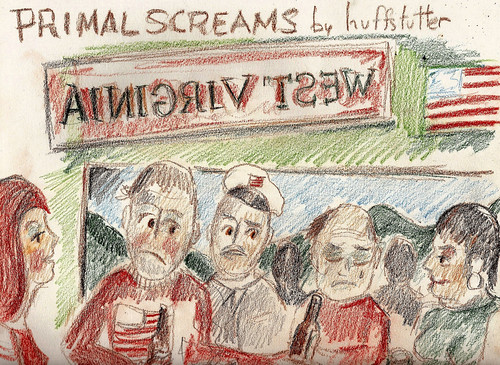
COAL MINERS IN WEST VIRGINIA WOULD LIKE TO HAVE HAD A FEW MILLION DOLLARS THAT WENT TO SOLYNDRA, a photo by roberthuffstutter on Flickr.
COAL MINERS IN WEST VIRGINIA WOULD LIKE TO HAVE HAD A FEW MILLION DOLLARS THAT WENT TO SOLYNDRA
Coal miners in West Virginia and other states are not pleased that millions of taxpayer dollars were given (loaned) to a company to make solar panels. Coal miners are also not pleased that EPA is trying to shut down the coal mining industry when coal mining is the one industry that has given America the energy to become a great nation throughout the last two centuries.
"And now we are supposed to think that SOLAR PANELS are going to help us become an industrial nation once again?" This is a question that is being asked daily.
If there is one way to bankrupt a state, it is to shut down its industry, an industry with heritage, history and many family ties. Coal kept our ancestors warm and it keeps millions of Americans warm today.
Thursday, November 1, 2012
Tokyo: Ochanomizu
Thisphotograph by THOMAS LOTTERMOSER has had more than 25,000 views. Yes, it looks like a miniature creation of a popular area in Tokyo, but it is authentic. For Tokyo fans, this is a must-see. How much would a studio apartment cost?
____________________________________
Tokyo: Ochanomizu by manganite
Monday, October 29, 2012
Shinmaruko, Kanagawa
From the moment I arrived in Japan in August of 1961, I was totally fascinated by the lifestyle of the Japanese. I fell in love with the buildings, the streets, the lanterns, and of course, the people. I developed a love for Japan that will remain in my heart as long as I live. There are memories of friends I love that still warm my heart, mind and spirit. I felt at home in Japan; I admired the Japanese character and propriety, their respect and polite attitudes. In my mind, Japan remains a memory that I would have missed had I not spent three years in Kanagawa area.
yOUR WORK...has a soul with heartbeats. I truly admire your work and find it difficult to stop viewing your work once I begin. Thank you for sharing your most unique talent and creative art through photography. Editor
___________________________________
Shinmaruko, Kanagawa by moominsean
Saturday, October 27, 2012
residential - tokyo
I am always amazed at how much Japan has changed in the last 50 years. The USA has changed too, but not nearly like Japan. Whereas Japan has built new buildings and made much progress in infrastructure, America has let its cities crumble and fall.
Whereas Japan has added more and more trains, America has cancelled train routes. Whereas the crime rate in the USA grows higher and higher, Japan is the safest nation on earth.
I truly admire the Japanese and Japan.
____________________________________
residential - tokyo by xthylacine
Tuesday, October 23, 2012
WELCOME TO SAGAMI OTSUKA 1961
MUCH HAS CHANGED IN SAGAMI OTSUKA since this photo was taken in 1961.
WELCOME TO SAGAMI OTSUKA 1961 by roberthuffstutter
Monday, October 8, 2012
BLOGABOUTJAPAN: a blog by R.L.Huffstutter
THE YOKOHAMA HARBOR IN 1962, Photo by Robert L. Huffstutter with a Petri 35mm.
Eventually, it is my desire to have an exhibition of my photographs and watercolors of Japan sponsored by a Japanese company.
Would like for the exhibition to be in Yokohama and last for several months. Naturally, it would be great if the trip was financed by the sponsoring company. I believe with the right promotions, it would attract several million in attendance over two months. This could be a lucrative opportunity for all involved.
Robert L. Huffstutter
Sunday, October 7, 2012
Untitled
This is one ship that has been anchored and then tied up to the pier for over 50 years. Looks like it is now maintained in top shape. Good to see it is still here
____________________________________
Untitled by owenfinn16
Untitled
HAVE YOU HEARD OF A STORE NAMED MORE'S IN TOKYO? IT DOESN'T MATTER, JAPAN IS SELLING MORE AND MORE OF EVERYTHING. Another cool photo by Owen Finn
____________________________________
Untitled by owenfinn16
Untitled
THE MYSTERY OF JAPAN REMAINS FOR THOSE WHO ENJOY THE ALLURE OF THE ORIENT. Another great image by Owen Finn.
____________________________________
Untitled by owenfinn16
Saturday, September 29, 2012
Lunch outside
LUNCH OUTSIDE
This is a great photo with the couple ordering lunch, the graphics provided by the menus--it is a slice of life. Editor
___________________________________
Lunch outside by kasa51
In their girlish day
It is so good to see the girls still wear their uniforms. This is a photo full of genuine joy. Thanks for sharing this photo.
Friday, September 28, 2012
YEN WAS 360 PER 1 U.S. DOLLAR IN 1962, JAPAN
YEN WAS 360 PER 1 U.S. DOLLAR IN 1962, JAPAN
This receipt reflects the cost of an elegant dinner in yen when 360 YEN equalled one U.S. DOLLAR. FUJIYA HOTEL AT MIYANOSHITA,HAKONE,JAPAN. To summarize, the dinner was slightly over ten dollars
Thursday, September 13, 2012
WIEN COFFEE SHOP, YOKOHAMA 1962 & 1963
It was really only during my first few months in Japan that I traveled with my service buddies. I believe this was the case in most of our tours.
Once we became accustomed to the country and were able to find our way around, we found seperate interests and let our personal preferences be our guide as we met new friends.
Finding Japanese friends was not difficult. Youth our age, both male and female were anxious to befriend us and learn about American culture and the English language. On a typical Saturday, one could walk around Yokohama all day and never find a lonely moment.
The city parks were among the best spots for meeting Japanese friends our age. Most of us were in our late teens and early 20s, thus our new friends were in the same age range. I enjoyed the cultural exchange, the friendships.
However, Yokohama was full of small and intimate coffee shops where the atmosphere was created to give one a European mood or attitude. One particular cafe became a favorite and many of my Saturdays began there at noon when a beautiful young lady entered and walked toward my table. French music was always playing softly. I would stand to welcome her. In that era, there was no public hugs as there are today. There were hugs, for sure, embraces really, but they were reserved for intimate times when the time for mutual affection and romance became the focus of the meeting for awhile. Romance was a very personal and emotional event, at least that is how I recall romance so many years later. French music and the aroma of coffee will forever take my mind not to Paris, but to the Yokohama of 1962 and 1963. As one grows older, memories are meant to be recalled; they are reminders of our youth when our energies and dreams were part of our daily life. It is good to have memories that will create warmth in the mind and heart. In some ways, they are the rewards of a youth we do not regret, memories of times that probably were not meant to last a lifetime, but memories that are remembered for a special tenderness that we sometimes wish that lasted but didn't. Nevertheless, they were memories that made one recall youth and a foreign love affair very special. Only those who have experienced what I am speaking of can totally understand my feelings on this specific type of romance.




